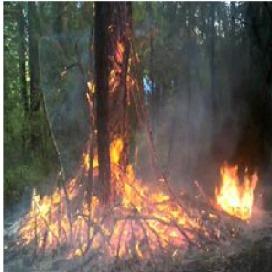Early Forest Fire Prediction
Revolutionary Early Forest Fire Prediction: IoT sensors transmit data to ML model for real-time fire risk. YOLOv5 confirms fire with instant alerts and precise location for swift response
Created on 31st March 2024
•
Early Forest Fire Prediction
Revolutionary Early Forest Fire Prediction: IoT sensors transmit data to ML model for real-time fire risk. YOLOv5 confirms fire with instant alerts and precise location for swift response
The problem Early Forest Fire Prediction solves
From 2001 to 2022, India lost 3.59 lakh hectares of tree cover from fires and 2.15 million hectares from all other drivers of loss.
The annual loss from forest fires in India is estimated to be around 440 crore rupees (about $107 million). This estimate does not include biodiversity loss, nutrient loss, soil moisture loss, and other intangible benefits.
According to the forest inventory records, 54.40% of forests in India are exposed to occasional fires, 7.49% to moderately frequent fires, and 2.40% to high incidence levels.
Due to this:
• Environmental Imapct
• Air Quality, health and Econimic losses
• Wildlife and Ecosystem Disruption
• Carbon Emisssion and Climate Change
• Resources Allocation and Emergency Response
Challenges we ran into
1)Data Accuracy: Ensuring accurate and reliable data from IoT sensors in diverse environmental conditions.
2)Cost and Accessibility: Procuring and deploying a sufficient number of sensors across vast forested areas can be costly and logistically challenging. Ensuring availability of sensors within budget constraints while maintaining coverage over critical areas poses a significant challenge.
3)Maintenance and Reliability: Remote forest environments present harsh conditions that can affect the longevity and reliability of sensors. Ensuring continuous availability and functionality of sensors amidst factors like extreme weather, wildlife interference, and physical damage requires robust maintenance strategies and resilient sensor designs.
4)Real-time Communication: Overcoming latency issues in transmitting data and alerts for swift response.
Integration Complexity: Integrating multiple hardware and software components seamlessly for a cohesive system.
